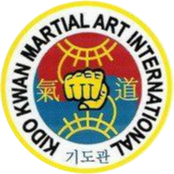Originally published at Soo Shim Kwan
After my recent post on the three Korean terms (Moosool, Mooye, and Moodo) used to describe the combat arts, it reminded me of one of my first submissions for Totally Tae Kwon Do, in which I describe the differences in meaning between “instructor,” “master,” and “grandmaster” in ITF Taekwon-Do. Since that essay was never actually posted on this blog I decided to do so now, below — expanded with hangeul and hanja. A related essay by Mr. John Johnson (an ITF 4th Dan) links Moosool, Mooye, and Moodo with Instructor, Master, and Grandmaster, and can be read here.
“Instructor,” “Master” and “Grandmaster”: An Explanation of the Titles Used in ITF Taekwon-Do
The above photo was taken on the day I received my fourth-degree black belt certificate and officially became a sabeom / 사범. Standing next to me is Master Kim-Hoon.
What does it mean to be a master? In truth, it depends on the style one does. Most Korean styles like Tang Soo Do, Hapkido, and WTF Taekwon-Do attribute the English title master to a practitioner with a 4th Dan 4th-degree black belt) or higher. The Korean term used is sabeom or sabeomnim (sometimes spelled “sabum” or “sabom”) [사범], which means a coach or respected coach, respectively. The suffix “-nim” [-님] is an honorific that is added to denote respect.
Depending on the system a 1st to 3rd Dan is considered an assistant instructor, or junior instructor, and a 4th Dan and higher level practitioner is considered a full instructor or master level instructor. In Korean such differences as an instructor, master and grandmaster are not made. In Ko, rea all instructors are called sabeomnim [사범님], regardless of their Dan. A special term, kwanjangnim [관장님], is used for instructors that own their academies.
ITF Taekwon-Do, however, uses different Korean terminology for 1st-3rd Dan instructors, known as boosabeom [부사범], 4th-6th Dan instructors, known as sabeom [사범], 7th-8th Dan masters, known as sahyeon [사현], and lastly 9th Dan grandmasters, known as saseong [사성]. In all cases, the suffix “-nim” [-님] can be attached for added respect.
The terms “sahyeon” and “saseon” were created by the founder of ITF Taekwon-Do, General Choi Hong-Hi. To understand these terms better, including the terms “sabeom” and “boosabeom,” it is useful to look at the Korean root words from which they are formed.
Sabeom, meaning instructor, is made up of two root words, “sa” / 사 / 師 and “beom” / 범 / 範. The first syllable “sa” comes from the term “kyosa” / 교사 / 敎師 which means teacher. The second syllable in sabeom means “model”. The sabeom or coach is therefore a teacher after which the student should model him or herself. In other words, the student should try to emulate the techniques of the instructor.
The prefix “boo-” / 부- in boosabeom means assistant. A boosabeom is therefore considered an assistant instructor in ITF Taekwon-Do. This title is used for 1st-3rd Dan practitioners in ITF Taekwon-Do, especially when they teach under a sabeom.
At the master’s level (7th-8th Dan) in ITF Taekwon-Do the term sahyeon is used. Again, “sa-” means teacher. The syllable “-hyeon” / -현 / 賢 is related to virtue, wisdom, prudence, or good sense. A wise mother, for instance, is called “hyeonmo.” The implication is that the Taekwon-Do master is not merely a technical teacher, but also a teacher of morality or virtue. Hyeon can also means “the present” / 現. Understood philosophically, the Taekwon-Do master is a teacher of the moment. This might suggest a Zen understanding where the master teaches their practitioners to “be in the moment” or to bring the principles taught in Taekwon-Do into their everyday lives. While a sabeom could mean coach and be restricted to mere physical training, the sahyeon is more than a coach. The sahyeon—master—nurtures both the body and mind of his or her students.
Lastly, the 9th Dan grandmaster is called saseong / 사성. Once again “sa-” means teacher. Seong / 聖, here, means “sage.” A sage is a mentor in spiritual and philosophical topics, with wisdom gained through age and experience. In ITF Taekwon-Do, it is implied that the grandmaster is not merely a technical teacher (body), nor just a moral teacher (mind), but also a teacher of philosophy (spirit); someone that can guide you on your life’s journey and give you insight into the deeper truths in life.
While practically all Korean martial arts use the term “sabeom” to refer to instructors, ITF Taekwon-Do is the only one to use the terms “sahyeon” and “saseong.”* General Choi Hong-Hi created these terms and included them in the ITF system to indicate that Taekwon-Do is not merely a combat sport and Taekwon-Do teachers are not merely sports coaches. The terms “sahyeon” (moral teacher) and “saseong” (sage teacher) suggest that Taekwon-Do is an ascetic activity; an activity that ought to lead to moral and intellectual improvement. The idea that Taekwon-Do is a means of character development places a great responsibility on Taekwon-Do teachers. Hopefully, instructors, masters, and grandmasters will live up to the implied responsibility embedded in their titles.
![]()


Average Rating